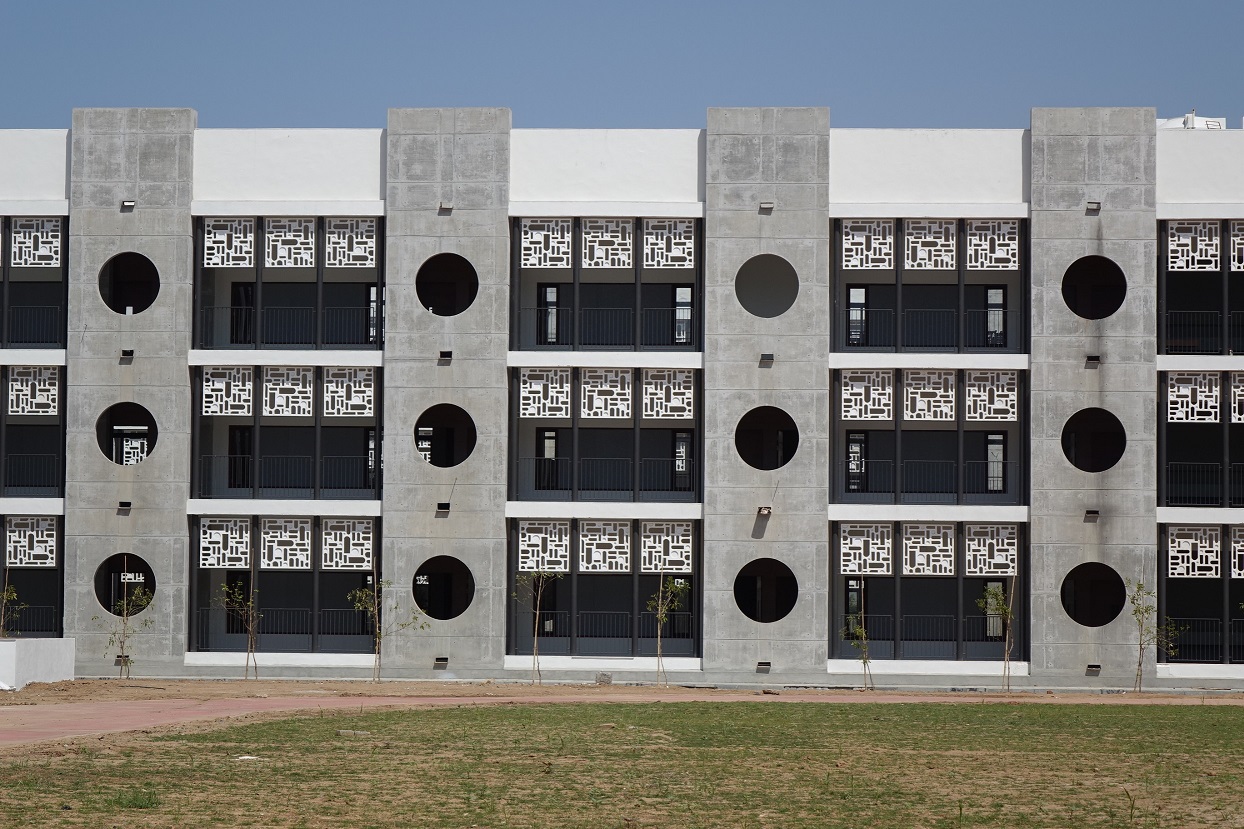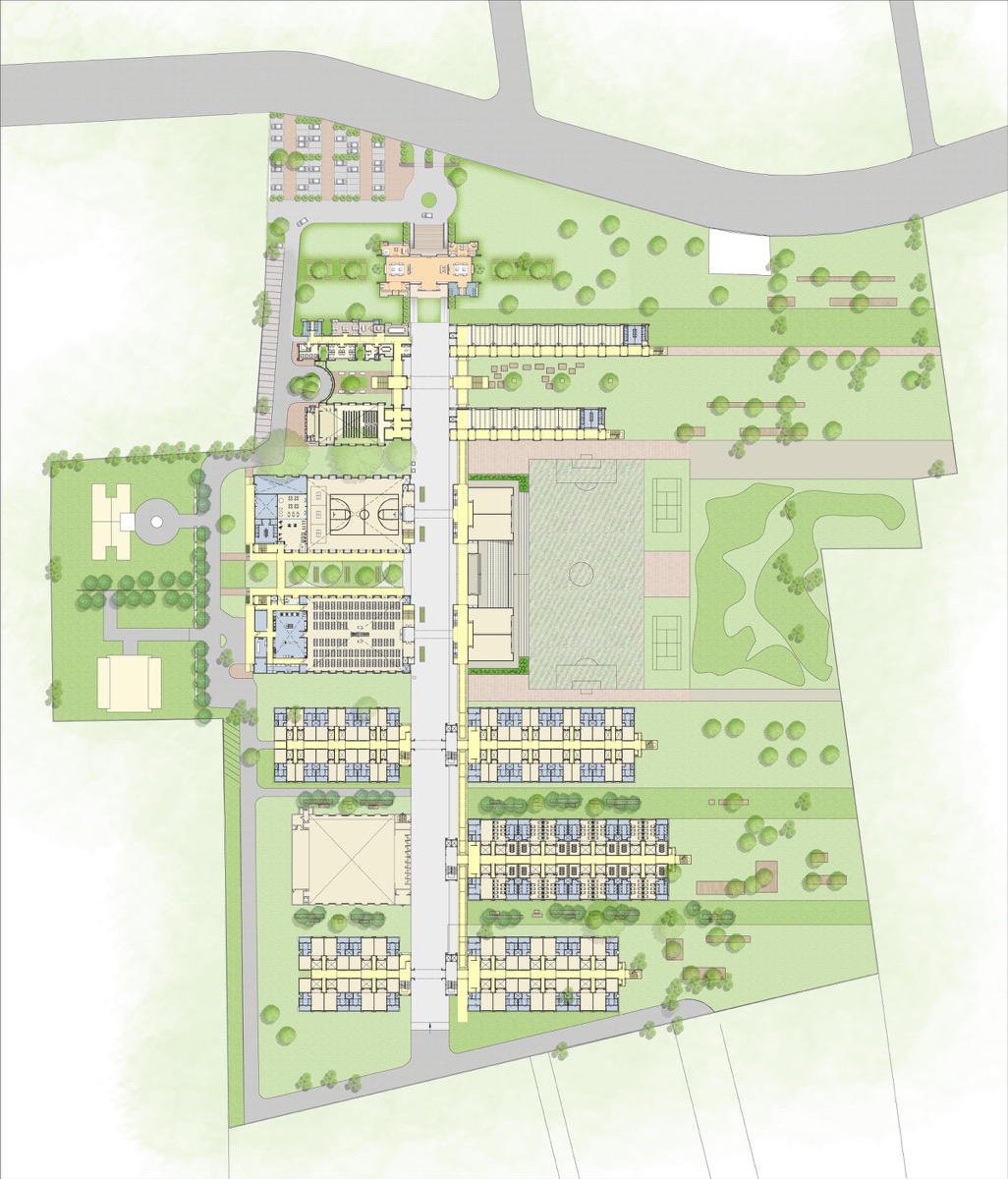Project Facts
Project name: BAPS Girls Residential School
Typology: Institutional (School & Hostel)
Architect’ Firm: Kapadia Associates design LLP
Website: www.kapl.in
Project location: Gandhinagar, Gujarat
Completion Year: 2016
Site Area: 23 acres
Gross Built Area: 465,000 Sq Ft
Photo credits : 1. Architect 2. Piyush Rana photography
Design Team: Sanket Jayakar, Gaurang Raiyani, Kalyani Shroff-Gupta, Manasi Shah, Kalgi Shah, Vivek Patel
Client: BAPS Trust
Engineers: Anal Shah Structural Consultants, ARKK MEP Consultants
Consultants: Graphics Beyond – for Screen Design
Contractors: Aarti Constructions (Civil) , Hifeb (Windows)

BAPS is a charitable organization with holistic and spiritual education as one of its key goals. This Trust approached the architect with a brief to build a self contained Girls school campus on the outskirts of the city of Gandhinagar, very close to Ahmedabad. The school campus is conceived as low-rise network of buildings and landscape spaces that encourage encounter & communication. The concept is driven by the central spine or street as organizing device along which a series of linear blocks are attached. Used by students from all the blocks, this central street creates porous zones of interaction that flow into each other.



Along this spine, the sequential visual journey also matches the structure of program- Administration, School, Sports hall, Residential in that order. Upstairs the corridors layer the learning spaces and allow Diffused natural light and ventilation by means of a GRC Jalli designed with a distinct graphic pattern. This custom pattern was designed to resonate with the Trusts iconography and identity.
SECTIONS:
The corridors are spaced with concrete walls with round geometric openings. These shaded pockets allow pause spaces and relief from the harsh sun glare during summers. The exposed concrete facades draw architectural inspiration from the institutional heritage of Ahmedabad. The Material Pallette is very restrained , neutral, in shades of grey and is meant to be a backdrop to the colorful artwork and uniforms of the school children.
































